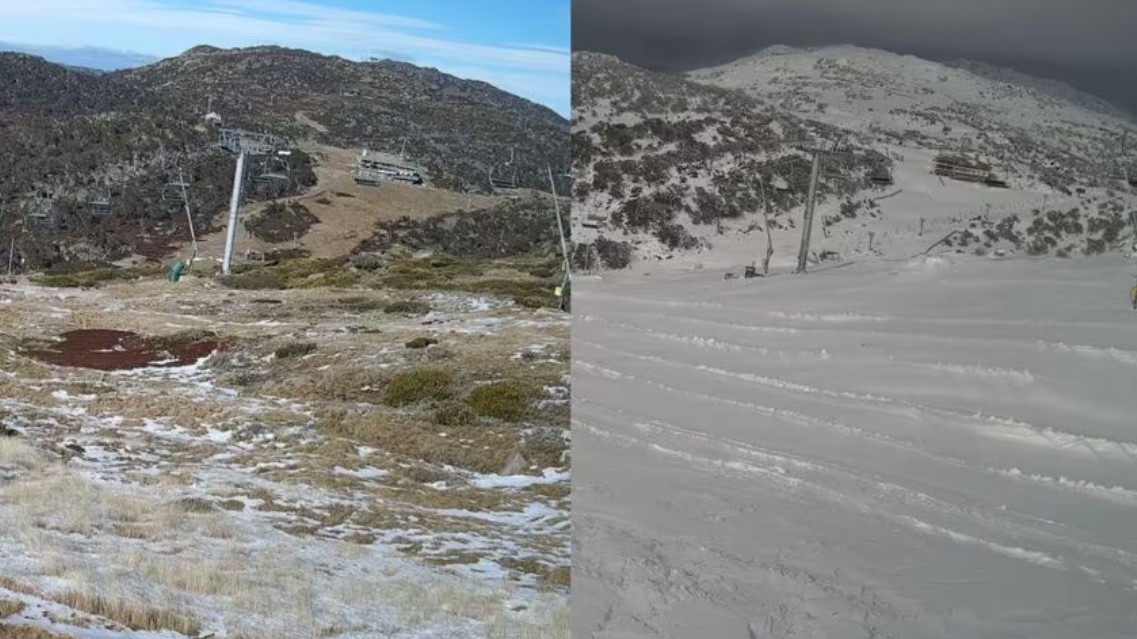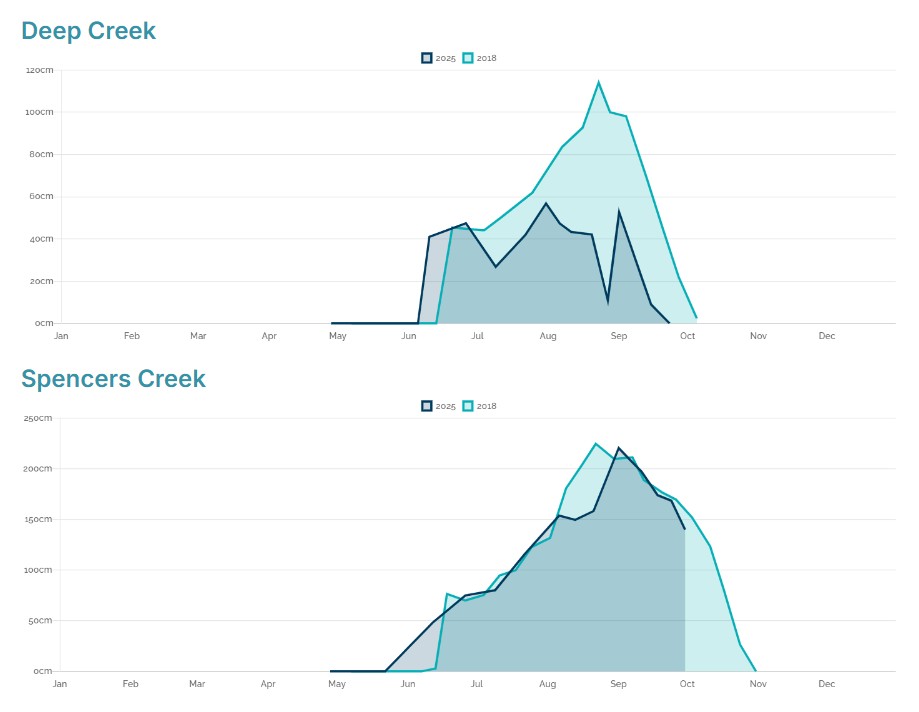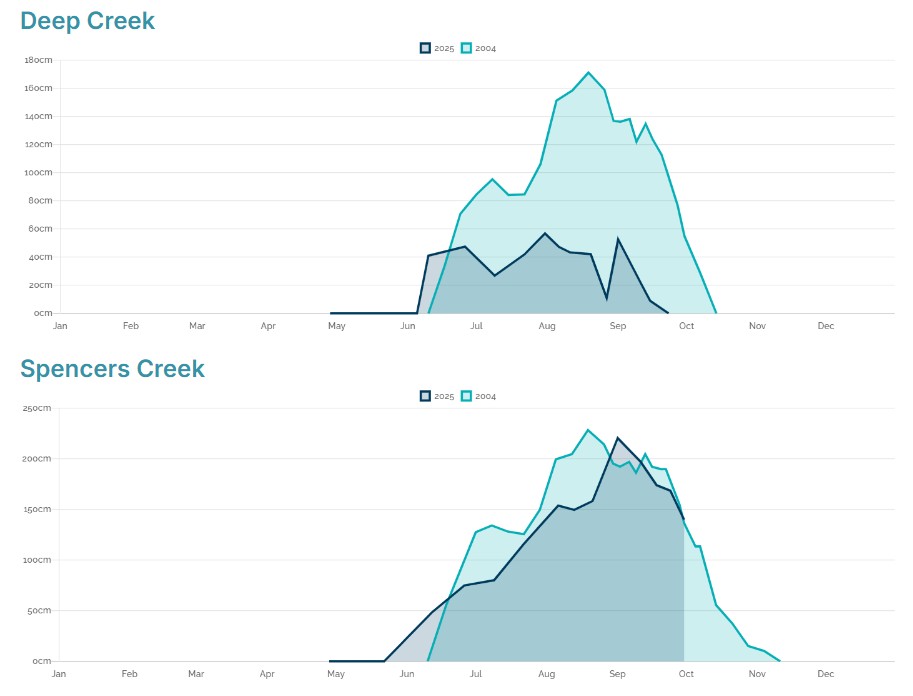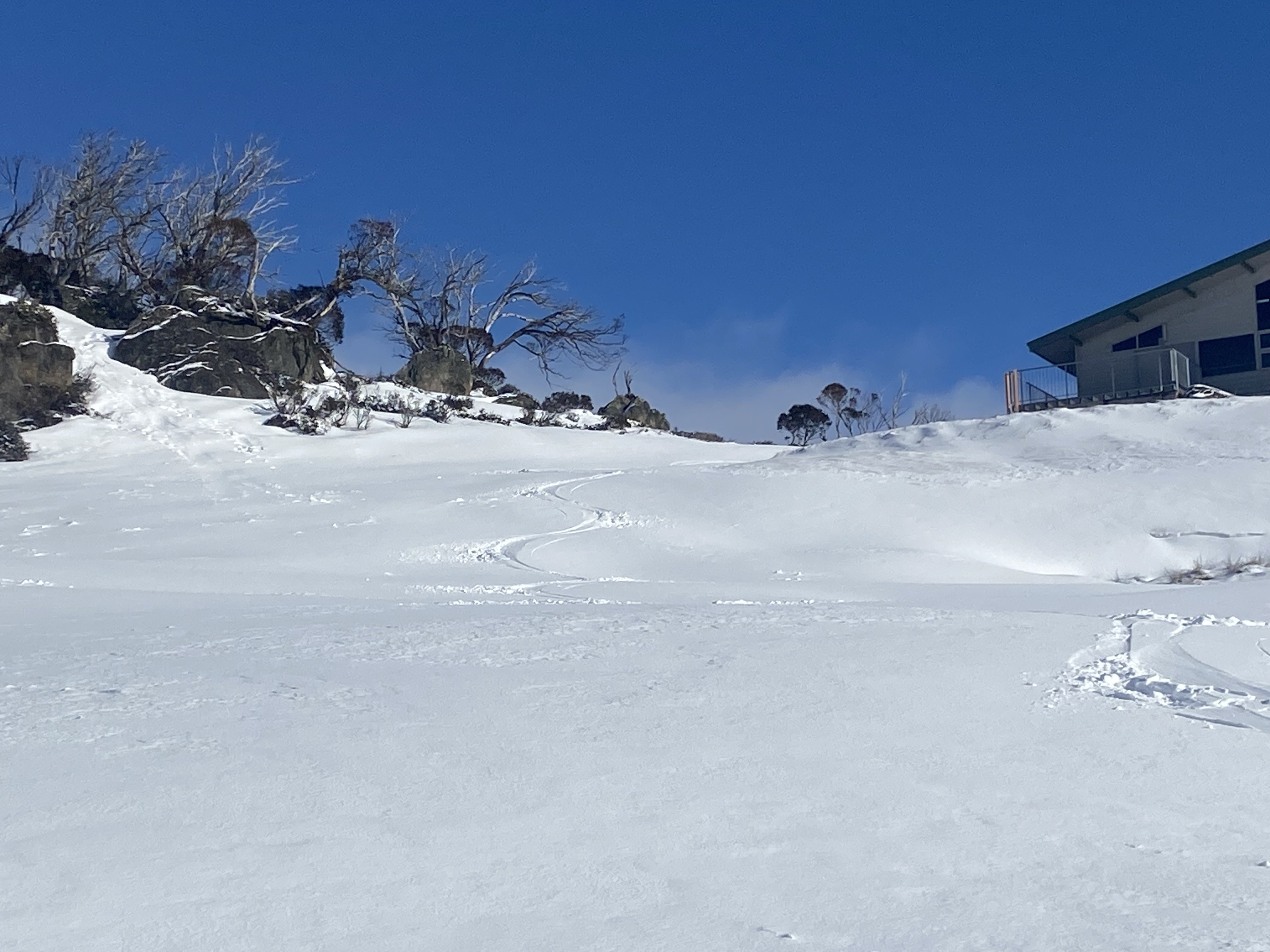Aussie ski season ends with a snow base of a metre up high
The lifts stopped turning in Victorian resorts on Sunday, while Perisher and Thredbo are still open for skiing and snowboarding on what is a long weekend Monday in NSW – although strong winds may have the final say on how many lifts run.
But by the end of today, that’ll be it. The 2025 Australian snow season will be done and dusted, and it was a good one too. Not a remarkable one in historical terms, but a slightly above-average season in terms of peak snow depth.
It was also a relatively long season by recent standards. The first big blizzard arrived just in time for the traditional King's Birthday long weekend opening in June. Weatherzone captured the impact of the big early-season snowstorm in our story that featured a series of before-and-after images.

Image: The summit run at Mt Blue Cow, part of Perisher resort in NSW, before and after the long weekend blizzard in June 2025.
This season's peak snow depth at Spencers Creek in NSW was 220.4cm on September 1.
Data has been collected by Snowy Hydro at Spencers Creek (at an elevation of 1830m, roughly halfway between Perisher and Thredbo) and at two lower sites since 1954. The average Spencers Creek season depth over the length of the data set is just under two metres.
So at high elevations, this season's NSW snow depth exceeded the average. This was also true in Victoria, where Mt Hotham's signature Heavenly Valley chairlift had its highest number of operational days in 25 years.
Lower down, it was a different story. Selwyn Snow Rresort, the lowest commercial ski resort in NSW, had a mediocre season that ended in early September. So too did Victoria's Mt Baw Baw, that state's lowest ski hill.

Image: Spencers Creek (dark blue) and Deep Creek (light blue) snow depths in 2025 vs 2018. Source: Snowy Hydro.
The graphs (above) show Spencers Creek and Deep Creek in NSW in 2025. The lower graph shows that the 2025 and 2018 seasons were similar in terms of both snow depth and season duration at Spencers Creek.
But at the Deep Creek snow measuring site, which is just 210m lower at an elevation of 1620m, the picture is very different. While Deep Creek topped a metre back in 2018, its peak depth barely rose above 50cm this season.
The 2004 graphs (below) paint the picture even more starkly. Again, the peak depth and season duration at Spencers Creek was similar in 2004 to 2025. But this year's peak depth at the lower Deep Creek site was only about a third of the 2004 peak depth.

Image: Spencers Creek (dark blue) and Deep Creek (light blue) snow depths in 2025 vs 2004. Source: Snowy Hydro.
Fortunately, the warming trend which has impacted the lower parts of Australia's alpine region has not yet taken a significant toll of snow cover at the highest elevations. Indeed, conditions were still pretty good out there this weekend at Australia's highest resort of Perisher.
There were even a few fresh tracks available on the slopes as late as last Friday after an early October snowfall topped up the slopes before the final weekend.

Image: Nice turns at Perisher on Friday, October 3, 2025. Source: Steve Smith.
Meanwhile the most recent Snowy Hydro reading at Spencers Creek for the 2025 season was 139.9cm on September 30.
Despite rapid melting on what was a warm weekend, snow depth is still likely around the one metre mark. For skiers and snowboarders who are willing to hike and "earn their turns", the back country awaits and should be skiable until at least early November in NSW.